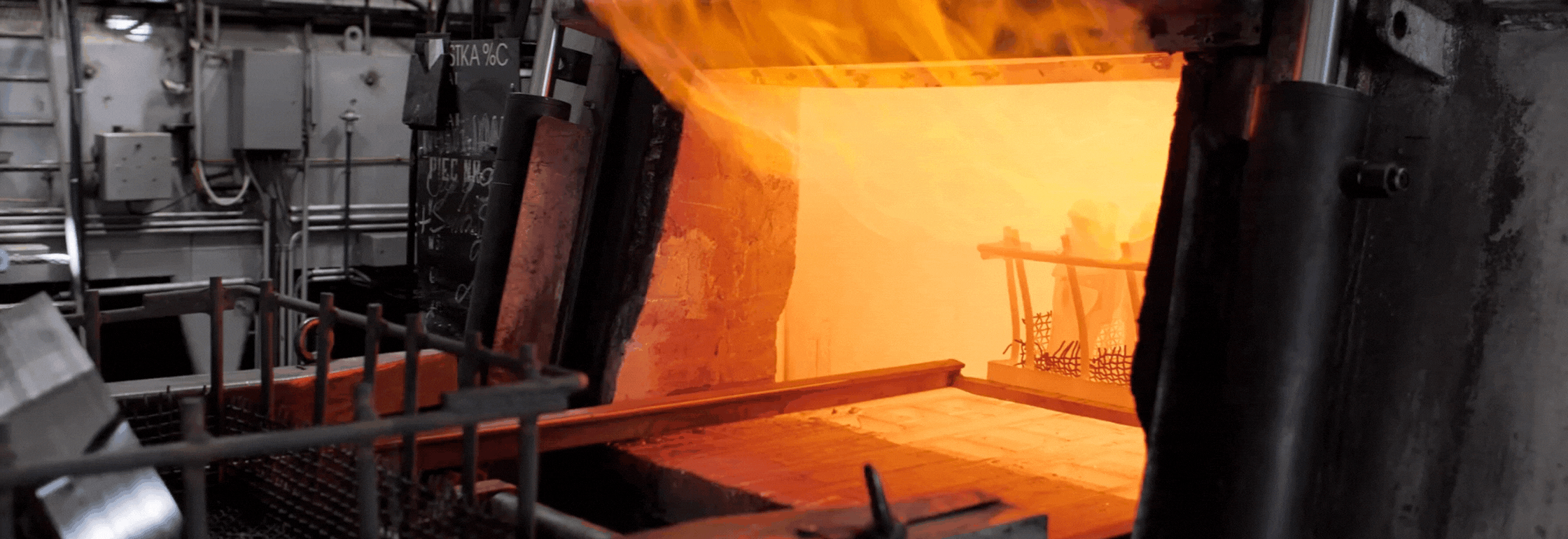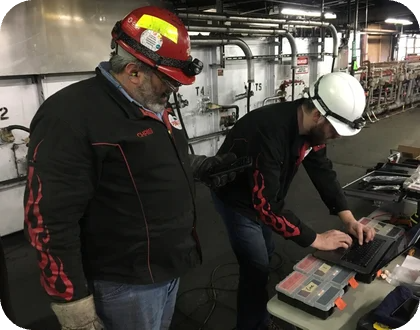Safety Train Verification
Regardless of year installed, ALL furnaces must verify safety trains annually! PSNERGY can help you comply with requirements of the latest NFPA 86 Standard.

Compliant with recent nfpa 86 updates per 2023?
According to the 2023 release of NFPA 86 Standard for Ovens and Furnaces, section 7.4, operating industrial furnaces are required to have an annual Safety Train Verification performed and documented. This provision affects all industrial furnaces, no matter the date of installation, and eliminates the "grandfather clause."
What is a Safety Train Verification?
Our Safety Train Verification service is a meticulous inspection process designed to verify and document the functionality of your industrial furnace gas safety system. This procedure ensures your equipment meets the annual safety standards set by NFPA 86.

Safety Train Procedure
Work Completed During Certification: This information references the PSNERGY document FSM-001 Standard Procedure for Safety Train Certification. For more information, visit the NFPA website.
Valve Testing
- Emergency Shutoff Valve:
- A visual inspection will verify that the emergency shut off valve exists on the safety train and meets the specifications outlined in section 3.1.1.
- Equipment Isolation/Manual Shutoff
- A visual inspection will verify that the equipment isolation/manual shutoff valve exists on the safety train and meets the specifications outlined in section 3.1.2.
- Leak Testing Shutoff Valves:
- Local visual indication provided at each safety shutoff valve for burners or pilots in excess of 150,000 BTU/hr.
- Perform SSOV leak test.
- SSOV #1
- Allowable leak rate: __________
- Measured leak rate: __________
- Closes in 1 second or less upon becoming de-energized.
- “No Block” Condition: Pass / Fail
- SSOV #2
- Allowable leak rate: __________
- Measured leak rate: __________
- Closes in 1 second or less upon becoming de-energized.
- “No Block” Condition: Pass / Fail
- SSOV #1
Pressure Testing
- Overpressure Protection:
- A visual inspection will verify that the overpressure protection exists on the safety train and meets the specifications outlined in section 3.2.2.
- Low-Pressure Switch:
- Visual inspection to verify the existence of the Low-Pressure Switch on the safety train, as per section 3.2.3.
- Validation that the pressure switch trips at the correct pressure, closing the safety shutoff valve.
- High-Pressure Switch:
- Visual inspection to verify the existence of the High-Pressure Switch on the safety train, as per section 3.2.4.
- Validation that the pressure switch trips at the correct pressure, closing the safety shutoff valve.
- Note: If the customer has specific pressure range requirements, every attempt will be made to set the valve accordingly. The system will fail the safety train certification if the safety valve cannot be set within the required pressure range.
System Testing
- Excess Temperature Limit Interlock
- Visual inspection to verify the existence of the excess temperature limit interlock on the safety train, as per section 3.2.3.
- Validation that the temperature limit switch trips at the correct temperature, closing the safety shutoff valve until manually reset.
- Combustion Air Pressure Interlock:
- Visual inspection to verify the existence of the combustion air pressure interlock on the safety train, as per section 4.3.2.
- Validation that the pressure switch trips at the correct pressure (low), closing the safety shutoff valve until manually reset.
Component Inspection
- Sediment Trap or Drip Leg:
- Visual inspection to verify the existence of the sediment trap or drip leg on the safety train, as per section 3.3.3.
- Y-Strainer / Gas Filter:
- Visual inspection to verify the existence of the Y-strainer/gas filter on the safety train, as per section 3.3.4.
- If accessible, the component will be disassembled and cleaned.
- Emergency Shutoff Valve:
- Visual inspection to verify the existence of the emergency shutoff valve prior to the safety train, as per section 6.2.3.1.
- Equipment Isolation/Manual Shutoff Valve:
- Visual inspection to verify the existence of the emergency shutoff valve prior to the safety train, as per section 6.2.4.1.
- Visual inspection to verify the existence of the emergency shutoff valve prior to the safety train, as per section 6.2.4.1.
Deliverables
Comprehensive report highlighting observations, providing detailed documentation, and ensuring your furnace meets NFPA 86 safety standards. This will include recommendations to stay within, and up to date with NFPA 86 Standard to improve a safe environment and will be accessible through the customer portal.
.png)

NFPA 86 (Chapter 7)
